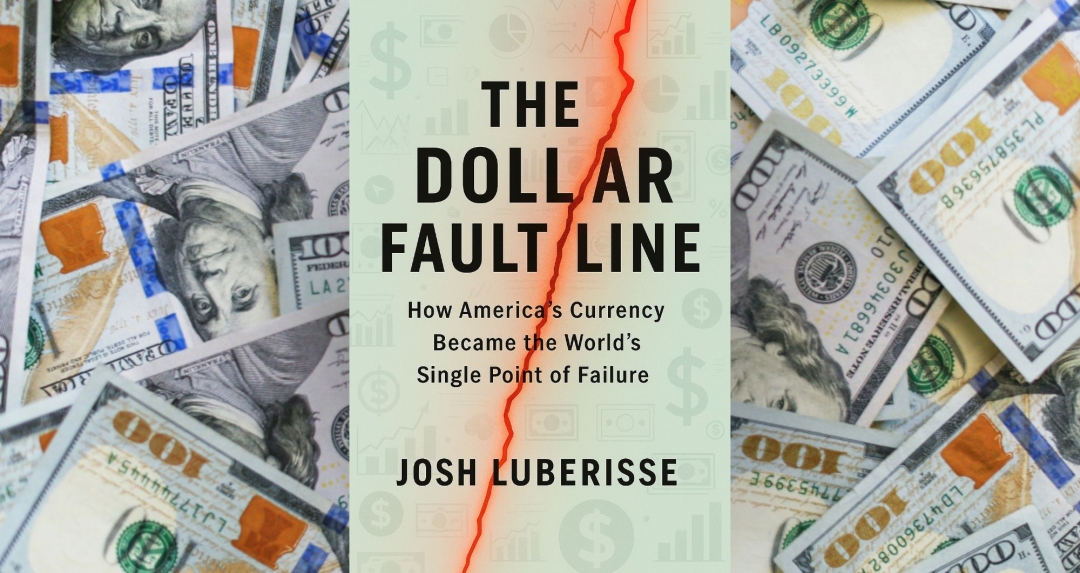
NEW YORK, US - As the U.S. government shutdown enters its second week, sending tremors through Treasury markets and raising fresh questions about American financial governance, a timely new book argues that such crises are not anomalies but symptoms of a deeper structural problem: the entire global financial system runs through a single point of failure.
The Dollar Fault Line: How America's Currency Became the World's Single Point of Failure, published by Fortis Novum Mundum and available everywhere books are sold, arrives at a moment when economists and market analysts are openly questioning what was once unthinkable—the reliability of the dollar system itself. The book details how the global financial architecture has evolved into a “single-point-of-failure system” dangerously reliant on the U.S. dollar, with this latest government shutdown serving as the latest tremor along a volatile fault line.
"Every time Washington flirts with default or shuts down the government, the rest of the world watches in disbelief," said Josh Luberisse, author of The Dollar Fault Line. "What most people don't realize is that these political theatrics don't just affect federal workers—they ripple through $4 trillion in daily global payments, threaten collateral markets worldwide, and force foreign central banks to question whether they can rely on a system whose stability depends on last-minute Congressional deals."
The current shutdown has already triggered familiar warning signs: Treasury bill yields are spiking on securities maturing near potential debt-ceiling deadlines, cross-currency basis spreads are widening as foreign banks hedge dollar exposure, and reserve managers from Tokyo to Frankfurt are quietly recalibrating risk models that assumed American governance would never become a systemic variable.
A System Built for Efficiency, Not Resilience
Luberisse's extensively researched work reveals how the global financial system has evolved into an architecture that's simultaneously brilliant and brittle. Nearly 90% of international transactions touch New York's payment infrastructure—Fedwire and CHIPS—creating unmatched efficiency but also unprecedented concentration risk.
"We've optimized for speed and cost, but we've forgotten about redundancy," Luberisse explains. "The same clearinghouses, the same correspondent banks, the same Federal Reserve swap lines. When any part of this machinery stutters—whether from political gridlock, cyberattacks, or climate shocks—the entire world scrambles for dollars that may not be there."
The book documents how recent crises—the 2020 pandemic dash-for-cash, the 2022 sanctions on Russia, even Hurricane Ian's impact on catastrophe bond markets—all trace back to the same choke point: Manhattan's payment rails and the Fed's willingness to backstop global dollar demand.
Washington Shutdown: Preview of Larger Risks
Financial analysts are drawing direct connections between the current shutdown and scenarios outlined in The Dollar Fault Line.
“The Dollar Fault Line” dedicates an entire section to “crisis by legislation,” analyzing how debt-ceiling standoffs and government shutdowns function like “scheduled natural disasters” for global markets. Luberisse explains that such events shred the legal fungibility and unquestioned safety of U.S. Treasuries, the foundational collateral for the entire global repo and derivatives market. “Every few years the reserve-currency issuer performs a ritual no other sovereign attempts: it threatens to default on purpose,” he writes.
"Luberisse warned that debt-ceiling theatrics function as scheduled systemic risk events," noted one Treasury market strategist who requested anonymity. "We're watching that play out in real-time. Repo haircuts are widening, money market funds are shortening maturities, and foreign reserve managers are asking whether they need Plan B."
The book reveals that such political disruptions are only one category of threat. Climate-driven insurance payouts, cyberattacks on payment infrastructure, and the gradual emergence of alternative payment networks—China's CIPS system, wholesale central bank digital currencies, regional settlement blocs—are all quietly chipping away at dollar centrality.
A Roadmap for What Comes Next
Rather than predicting the dollar's imminent collapse, The Dollar Fault Line offers a pragmatic 15-year timeline for how the global monetary system might evolve toward greater resilience—if policymakers act deliberately rather than waiting for crisis to force improvisation.
Luberisse argues for institutionalized swap lines, regional liquidity pools, interoperable digital currency networks, and revitalized multilateral frameworks like the IMF's Special Drawing Rights. "The goal isn't to dethrone the dollar," he writes. "It's to build backup systems so the next government shutdown, the next cyberattack, or the next climate catastrophe doesn't freeze global commerce."
About the Book
The Dollar Fault Line: How America's Currency Became the World's Single Point of Failure combines technical rigor with accessible narrative, tracing the dollar's rise from Bretton Woods through the Nixon Shock and petrodollar system to today's complex web of derivatives, repos, and digital experiments. Drawing on Federal Reserve data, BIS statistics, and exclusive insights from central bank pilots, the book offers both diagnosis and prescription for a monetary system under mounting stress.
About Fortis Novum Mundum
Fortis Novum Mundum is a visionary publishing house dedicated to bringing the most relevant and transformative ideas to a global audience. We support authors who challenge the status quo and offer new perspectives on critical global issues. Our team is committed to providing readers with resources that are not only informative but also catalyze positive change.
The Dollar Fault Line is available now in hardcover, ebook, and audiobook formats everywhere books are sold.
Media Contact
Company Name: Fortis Novum Mundum
Contact Person: Derek Martin
Email: Send Email
Address:2319 Nostrand Ave
City: Brooklyn
State: NY 11210
Country: United States
Website: https://fortisnovummundum.org/
